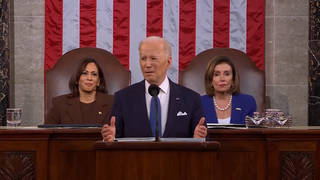
Topics
Guests
- Janine JacksonProgram Director, Fairness & Accuracy In Reporting (FAIR).
- Laura FlandersJournalist and Media Critic. Laura was the founder of the Women’s Desk at FAIR, andproduced and hosted FAIR’s weekly, syndicated radio show, “Counter Spin,” for more than 10 years. She is now the hostof Working Assets Radio which can be heard on KALW 91.7 in San Francisco and streaming live on the Internet.
- Phil Donahueformer host of the daytime talk show Donahue, and winner of 20 Daytime Emmy Awards.
After more than ten years of US military presence in Saudi Arabia, Saudi Arabia’s rulers may soon ask the US towithdraw. President George Bush, Secretary of State Colin Powell, and Secretary of War Donald Rumsfeld all deny thereports that Saudi Arabia will ask the US to pack up their troops. But they come at a time when U.S.-Saudi relationsare at a precarious low.
The United States has maintained a presence in Saudi Arabia ever since theGulf War, when both countries feared an Iraqi invasion of the oil-richkingdom. When U.S. troops remained after the war Saudi resentment rose, culminating in the bombing of the KhobarTowers in 1996. Nineteen American soldiers died in the attack; hundreds more were wounded. But the US still did notleave the country.
Now, as U.S. troops face eviction from Saudi Arabia, the military has been creating a ring of new and expandedmilitary bases that encircle Afghanistan throughout neighboring central Asia. Over the past four months, the UnitedStates has moved into nine countries in the region and built up to thirteen new bases, with no plans to dismantlethem after the bombing ends in Afghanistan. I spoke with Bill Arkin shortly after he broke this story in earlyJanuary.
Guests:
- Bill Arkin, correspondent for the LA Times and a weekly columnist for the Washington Post. Heserved as the director of Greenpeace International’s war response team during the Gulf War and served in the US armyfrom 1974 to 1978.
- Pratap Chatterjee, independent journalist, reporting from Uzbekistan.












Media Options